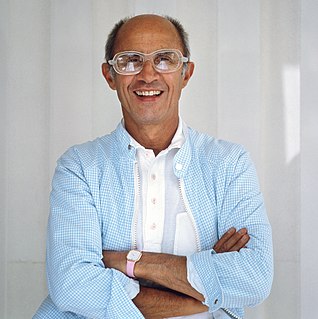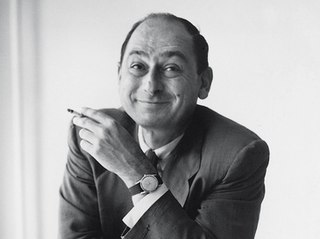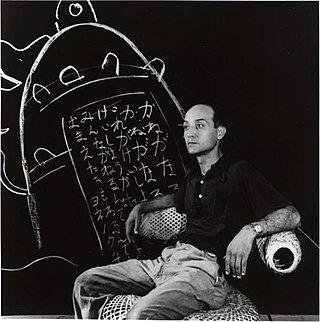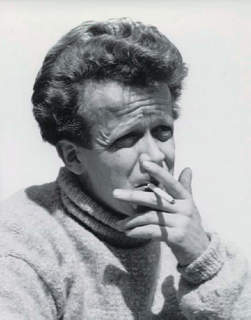 W
WAino Maria Marsio-Aalto was a Finnish architect and a pioneer of Scandinavian design. She is known as a co-founder of the design company Artek and as a collaborator on its most well-known designs. As Artek's first artistic director, her creative output spanned textiles, lamps, glassware, and buildings. It has been discovered that it was Aino who completed the first work commissioned through Artek which was the Viipuri Library in 1935. Her work is in the MoMA's permanent collection and the MoMA has included her work in 9 exhibitions. Aino Aalto’s first exhibition was Art in Progress: 15th Anniversary Exhibitions: Design for Use at Museum of Modern Art (MoMA) in New York City, NY in 1944. Other major exhibitions were at Barbican Art Gallery in London and Chelsea space in London. Aino Aalto has been exhibited with Pablo Picasso.
 W
WJerome Ackerman (1920–2019) and Evelyn Ackerman (1924–2012) are American industrial designers who as a team made contributions to the aesthetic of California mid-century modern with their ceramics, wood carvings, mosaics, textiles, and enamels in home furnishings and architectural elements. The Ackermans sold their products through their companies Jenev and ERA Industries. Evelyn was an accomplished artist and an author of books on antique toys and dolls.
 W
WJerome Ackerman (1920–2019) and Evelyn Ackerman (1924–2012) are American industrial designers who as a team made contributions to the aesthetic of California mid-century modern with their ceramics, wood carvings, mosaics, textiles, and enamels in home furnishings and architectural elements. The Ackermans sold their products through their companies Jenev and ERA Industries. Evelyn was an accomplished artist and an author of books on antique toys and dolls.
 W
WSergio Asti is an Italian designer and architect, primarily known for his industrial designs for firms such as Zanotta, Gabbianelli, Salviati, FontanaArte, Artemide, and Knoll.
 W
WAndré Courrèges was a French fashion designer. He was particularly known for his streamlined 1960s designs influenced by modernism and futurism, exploiting modern technology and new fabrics. Courrèges defined the go-go boot and along with Mary Quant, is one of the designers credited with inventing the miniskirt.
 W
WCharles Ormond Eames, Jr. (1907–1978) and Bernice Alexandra "Ray" Kaiser Eames (1912–1988) were an American married couple of industrial designers who made significant historical contributions to the development of modern architecture and furniture through the work of the Eames Office. They also worked in the fields of industrial and graphic design, fine art, and film. Charles was the public face of the Eames Office, but Ray and Charles worked together as creative partners and employed a diverse creative staff. Among their most recognized designs is the Eames Lounge Chair and the Eames Dining Chair.
 W
WGeorge Freedman was Australia's leading Interior Designer/ Interior Architect from 1970 until a younger generation became prominent in Sydney during the 1990s. Born in New York, where he studied architecture at Syracuse University, Freedman arrived in Sydney in 1968 and later designed many prestigious interiors, often including custom-made furniture. His notable interior schemes included executive suites for the Bank of New South Wales (1970) and the State Bank of New South Wales (1985), cultural institutions including Sydney's Powerhouse Museum, Museum of Applied Arts and Sciences, businesses, government premises, restaurants, residences and historic monuments, including a refurbishment of the Queen Victoria Building (2009).
 W
WEileen Gray was an architect and furniture designer and a pioneer of the Modern Movement in architecture. Over her career, she was associated with many notable European artists of her era, including Kathleen Scott, Adrienne Gorska, Le Corbusier, and Jean Badovici, with whom she was romantically involved. Her most famous work is the house known as E-1027 in Roquebrune-Cap-Martin, France.
 W
WAnouska Hempel, Lady Weinberg is a New Zealand-born film and television actress turned hotelier and interior designer. She is a noted figure in London society. She is sometimes credited as Anoushka Hempel.
 W
WArne Emil Jacobsen, Hon. FAIA 11 February 1902 – 24 March 1971) was a Danish architect and furniture designer. He is remembered for his contribution to architectural functionalism and for the worldwide success he enjoyed with simple well-designed chairs.
 W
WFinn Juhl was a Danish architect, interior and industrial designer, most known for his furniture design. He was one of the leading figures in the creation of Danish design in the 1940s and he was the designer who introduced Danish modern to America.
 W
WRaymond Loewy was a French-born American industrial designer who achieved fame for the magnitude of his design efforts across a variety of industries. He was recognized for this by Time magazine and featured on its cover on October 31, 1949.
 W
WGeorge Nelson (1908–1986) was an American industrial designer. While lead designer for the Herman Miller furniture company, Nelson and his design studio, George Nelson Associates, designed 20th-century modernist furniture. He is considered a founder of American modernist design.
 W
WIsamu Noguchi was an American artist and landscape architect whose artistic career spanned six decades, from the 1920s onward. Known for his sculpture and public artworks, Noguchi also designed stage sets for various Martha Graham productions, and several mass-produced lamps and furniture pieces, some of which are still manufactured and sold.
 W
WVerner Panton is considered one of Denmark's most influential 20th-century furniture and interior designers. During his career, he created innovative and futuristic designs in a variety of materials, especially plastics, and in vibrant and exotic colors. His style was very "1960s" but regained popularity at the end of the 20th century. As of 2004, Panton's best-known furniture models are still in production.
 W
WGaetano Pesce is an Italian architect and a design pioneer of the 20th century. Mr. Pesce was born in La Spezia in 1939, and he grew up in Padua and Florence. During his 50-year career, Mr. Pesce has worked as an architect, urban planner, and industrial designer. His outlook is considered broad and humanistic, and his work is characterized by an inventive use of color and materials, asserting connections between the individual and society, through art, architecture, and design to reappraise mid-twentieth century modern life.
 W
WGiovanni "Gio" Ponti was an Italian architect, industrial designer, furniture designer, artist, teacher, writer and publisher.
 W
WDieter Rams is a German industrial designer and retired academic, closely associated with the consumer products company Braun, the furniture company Vitsœ, and the functionalist school of industrial design. His unobtrusive approach and belief in "Less, but better" design generated a timeless quality in his products and have influenced the design of many products, which also secured Rams worldwide recognition and appreciation.
 W
WRichard Sapper was a German industrial designer based in Milan, Italy. He is considered as one of the most important designers of his generation, his products typically featuring a combination of technical innovation, simplicity of form and an element of wit and surprise. He received numerous international design awards, including 11 prestigious Compasso d'Oro awards and the Raymond Loewy Foundation's Lucky Strike award. His products are part of the permanent collections of many museums around the world, with over 15 designs represented at New York's Museum of Modern Art (MoMA), as well as London's Victoria and Albert and Design Museums.
 W
WJosefine Pola Stout was an American designer best known for creating fine woolen fabrics. Born in Stryj, she studied with Josef Hoffmann at the Kunstgewerbe Schule in Vienna, and designed for the Wiener Werkstätte before she immigrated to the United States in 1925 with her first husband, architect and designer Wolfgang Hoffmann. Wolfgang and Pola Hoffmann became a prominent interior design team that contributed to the development of American modernism in the early 20th century. They dissolved their successful partnership in 1932, when she married popular mystery author Rex Stout. Pola Stout was an influential textile designer after her second marriage. She was executor of Rex Stout's literary estate after her husband's death in 1975.
 W
WKristian Solmer Vedel was a Danish industrial designer and part of the Scandinavian Design movement.
 W
WRussel Wright was an American Industrial designer. His best-selling ceramic dinnerware was credited with encouraging the general public to enjoy creative modern design at table. With his many other ranges of furniture, accessories and textiles, he largely transformed the atmosphere of the mid-century American home.
 W
WEva Striker Zeisel was a Hungarian-born American industrial designer known for her work with ceramics, primarily from the period after she immigrated to the United States. Her forms are often abstractions of the natural world and human relationships. Work from throughout her prodigious career is included in important museum collections across the world. Zeisel declared herself a "maker of useful things."